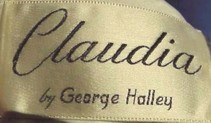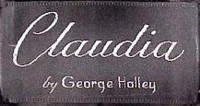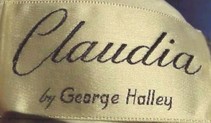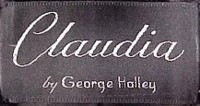George Halley (b.1930) At the age of 18, Halley left home hitchhiking, and ended up in New York, working for Baron Max von Waldech. He worked as a go-for who was permitted to show his own sketches to a few customers, and he was also permitted to work with the Baron on some gowns, including one for the last Carnegie Hall concert of Francis Renault, a famous cross-dresser who had a beautiful falsetto voice.
In late 1949 Halley applied for a job at Lord and Taylor. He managed to do some draping in a corner window and they were impressed enough to eventually let him do all the windows. His work was seen by Charles James, who hired him, saying Halley was a genius at draping.
Between the 1950s and 1966, Halley worked at a number of design firms including Jo Copeland for Pattullo, Andrew Arken (where he met Diana Vreeland, who liked his clothes and always, throughout his career, gave him generous space and covers in Vogue), Richard and Sidney Blauner, Jeunesse (his own name was on the designs he did here), Tzaims Luksus (his name is on some of the designs he did there), and he freelanced for Jane Derby, making samples for her shows.
In 1966 he started his own line with Claudia, his wife. They specialized in evening wear.
Halley was a 1968 Coty winner. The label lasted around ten years.
George is still designing and sewing clothing for friends and friends of friends. He also shows at local NYC fashion shows.
Information courtesy of Deborah Burke, Marie Bardos, and George Halley



